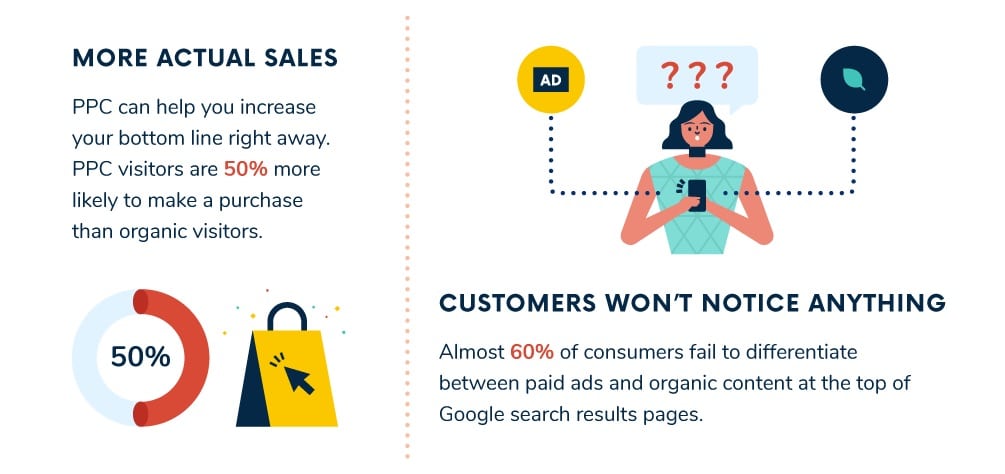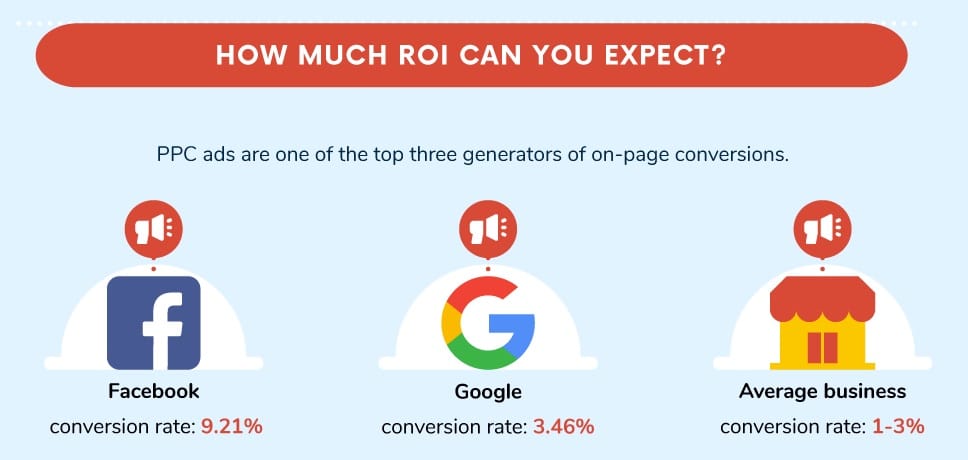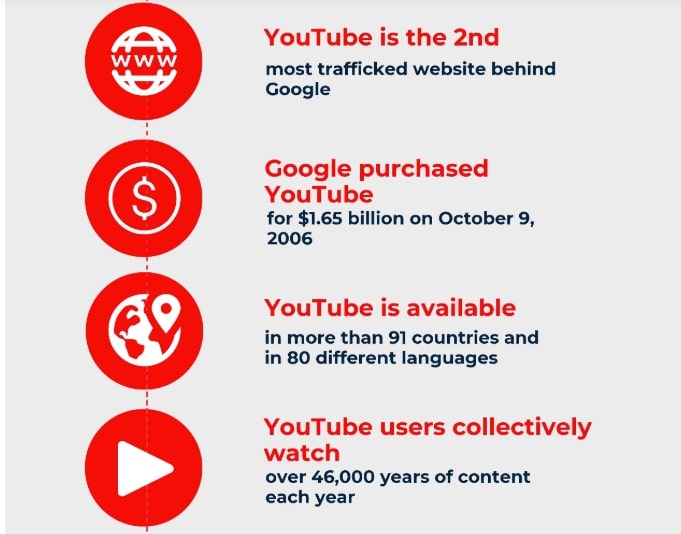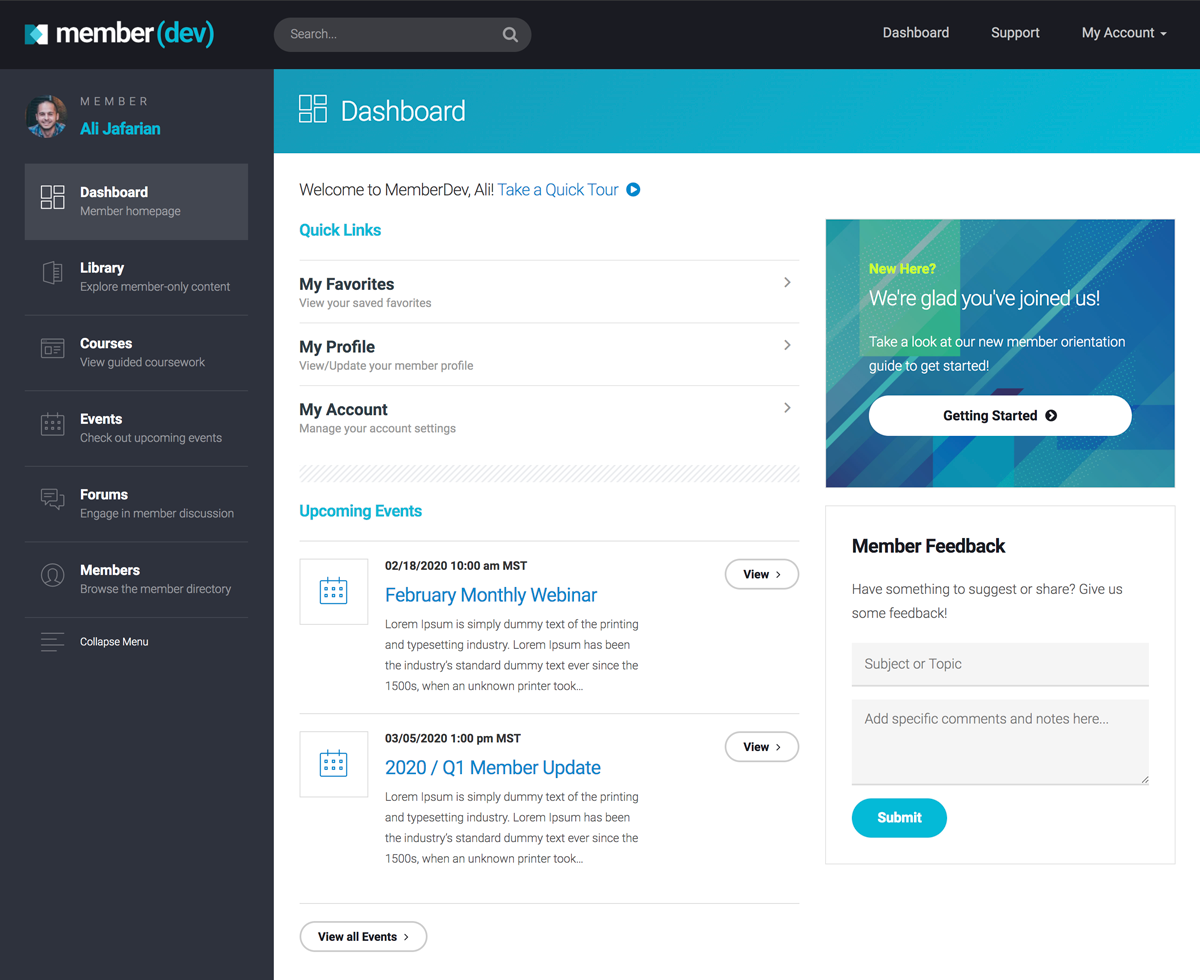What’s the best way for membership sites to generate quality leads?
Customers are the backbone of your business, but finding and keeping them isn’t as easy as it sounds. With more businesses embracing the recurring revenue subscription model than ever before, the competition has never been higher, which makes it essential to learn how to differentiate and drive growth.
The key lies in understanding the membership sales funnel. Although the traditional sales funnel approach is well established, membership and subscription sites have unique lead generation leads that require a different approach. The top-of-the-funnel is particularly important because every customer starts somewhere with your business. That first impression — or series of impressions — can make or break a lifelong relationship.
So what does the top-of-the-funnel look like for a membership site? And more importantly, how can you optimize your top-of-the-funnel marketing to capture new and better leads?
What Does the Membership Sales Funnel Look Like?
The goal of your top-of-the-funnel strategy is to generate as many leads as possible, with the ultimate goal of converting a certain percentage of those leads into customers by the end of the sales process.
The traditional sales funnel is defined in several stages which make up the customer lifecycle, and typically looks like this:

While the general principles of the traditional sales funnel do apply to membership and subscription sites — your first goal is to drive awareness, for example — your customer lifecycle looks slightly different.
Here’s how it compares:

Here’s how we break down the membership sales funnel:
Audience
Your audience is the top layer of users who watch or follow you. These can be social media followers, blog readers, or people who show up to hear you speak. Anyone who is aware of your business is your audience.
Subscriber
Your subscribers are the top/middle layer of users who have subscribed to your content. This includes email subscribers, blog subscribers, or anyone who is actively engaging with your business on a superficial level. This means they’ve given you an email and are subsequently on your mailing list.
Member
Your members are the bottom/middle layer of users who have created a free account with you. They’ve established membership by having a deeper level of commitment – i.e. login or access to something exclusive to members only. This may include membership in the form of a free trial or simply free access to limited resources. Regardless, these users are prime for the final level of becoming a customer.
Customer
Your customers are the bottom layer of users who have purchased something from you. This is the end goal of the funnel and the highest level of trust in the customer lifecycle. Users who have purchased something from you have made their way through the funnel and should now be nurtured into repeat customers and/or advocates.
Because your customers are automatically repeat-purchasers, the buy-in is much higher. This means that nurturing in the early stages can last much longer than a traditional sales cycle, and conversions can often be harder to come by.
While the recurring revenue model has tons of benefits, in some ways it can be a tougher sell for the average consumer because you have to convince them that you have something they want to use every day, week, month, or year. Not just one product, but multiple products over time.
So how does this impact your lead generation strategies? This unique sales funnel means a few things for your business:
You should consider adding a free trial membership or free member tier. If your business model allows it, consider adding a free tier. Free trials and memberships reduce the “buy-in” burden and help ease into the conversion, especially if your product or service comes with a hefty price tag.
Your top-of-the-funnel strategies need to fill a knowledge gap. For SaaS, in particular, user education is an essential component of success. Whether that’s teaching customers how to use your product or platform, or helping them understand industry challenges, education should be a top priority. Freemium content like blogs, tutorials, and guides are so important at both the top and middle of the funnel (that’s also why you need to perfect your onboarding strategy).
You need to nail your customer service from the get-go. All of the best top-of-the-funnel strategies in the world won’t save you if your customer service sucks.
According to Nextiva’s state of the industry report, 96% of consumers say customer service is an important factor in loyalty.
If you don’t get it right at the top, customers won’t make it to the bottom.

Of course, each of these topics could have its own guide, but for now, we’ll cover the basics of the top-of-the-funnel sales strategies so you can drive more traffic and capture higher quality leads.
Strategies for Driving Free Traffic
Your goal in the early stages of the sales cycle is to drive as much traffic as possible. The further you move down the funnel, the more important it will be to nurture high-quality leads, but we’ll touch on that in another section. For now, let’s look at some of the best free and paid strategies for driving traffic at the top-of-the-funnel.
If you’re looking for traffic-generating ideas, Google SERPs have plenty of ideas. SearchEngineJournal has a list of 101 easy and effective strategies for driving new traffic, including basics like:
- Optimizing your website on-page content for search engines
- Claiming your “Google My Business” listing
- Investing time in influencer outreach
- Starting an email newsletter and incentivizing signups
- And so on.
These are all great strategies for driving new traffic, and if you’re reading this you’ve probably done your fair share of googling. You probably know, for example, there are a number of ways to optimize your website for conversions, such as including calls to action and lead capture forms in the right places, providing clear benefits on every page, and making navigation easy and intuitive.
But in order for those measures to be worth anything in the long run, you need to attract the right type of visitors to your site. Based on our experience working with membership and subscription sites, in terms of traffic ROI, the list of traffic-generating strategies is much shorter:
The best ways for membership sites to drive free traffic are social media and blogging.
What’s the ROI of blogging?
We’re not alone in giving this advice. Blogging and social media have both become staples of the digital world. Look at the stats for blogging:
- Over 75% of Internet users say they regularly read blogs
- Marketers who prioritize blogging efforts are 13x more likely to see positive ROI
- B2B marketers who use blogs generate 67% more leads than those that do not

What’s the ROI of social media?
Social media stats tell a similar story:
- There are 2.77 billion social media users globally
- 97% of marketers are using social media to reach their audiences
- Content marketing on social media gets 3X more leads than paid search advertising
- 88% of businesses with more than 100 employees use Twitter for marketing purposes
These trends are quickly becoming the new norm for running an online business. According to HubSpot, between Q3 2018 and Q3 2019, the number of monetizable Twitter daily active users increased by 17%. In other words, there is a MASSIVE traffic opportunity in social media.
Which strategy should you focus on first?
In our experience, you should always start with blogging. Content creation forces you to write — and subsequently promote — the content [or offer] you’ve created, and in doing so, you’re investing in free promotion that could have long-term traffic gains if the content is well researched and written with users in mind.
What’s more, 23% of today’s posts on social media include a link to a blog post, so blogging first provides you with content that drives social media engagement back to your own site.
Blogging also optimizes your site for search, educates your users, and eases the ultimate buy-in, all of which are vital for success. It’s also easier to outsource blog creation in the early stages, although if you can, we suggest writing your own content or finding a writer who understands your industry before outsourcing.
You can’t manage other writers’ content if you aren’t able to judge the quality, so take the time to create some authentic content early on.
If you really want your content to take off, make sure to blog around relevant keywords. Leverage tools like MOZ and/or SEMRush to analyze your competition and find relevant keywords, and then build your content around those keywords to catch organic traffic (and eventually paid traffic). This will give you a leg up if you’re starting a blog from scratch.

Strategies for Driving Paid Traffic
Membership sites have a unique edge in that there’s usually an “offer” at the end of the funnel — in other words, something to buy via subscription. This makes paid ads an excellent channel to test since you can tie the traffic back to concrete metrics. With paid ads, it’s much easier to calculate your ROI on ad spend when people buy something vs having them visit a site and click a free offer.
Paid ads also have the benefit of driving your audience through the funnel, as visitors are more likely to make a purchase after clicking a paid ad than if they came to your site organically.

But which types of paid ads have the best ROI for membership sites?
In our experience, the best ways for membership sites to drive paid traffic are Facebook Ads and Google Ads.
What’s the ROI of Facebook Ads?
Whether or not Facebook is your favorite social media platform, there’s plenty of data demonstrating just how well Facebook advertising works. First, Facebook has one of the largest social media audiences today with over 2.4 billion active monthly users, and alongside Google, it has one of the highest ROIs for paid advertising.

While there’s some truth that Facebook isn’t quite the social media behemoth it once was, WordStream points out that market saturation was bound to have an impact on Facebook’s growth trajectory anyway, and for all intents and purposes it’s still the top leading social media platform on the market today with plenty of engagement.

- Facebook accounts for 80.4% of U.S. social referral share to ecommerce sites
- 74% of high-income earners use Facebook
- 90 million small businesses use Facebook
- The number of ad impressions increased by 33% in 2019
- The average Facebook user clicks on 11 ads per month
- The average organic reach for a Facebook post is 5.5%
In other words, it’s a site worth investing in if you’re going to run paid ads.
What’s the ROI of Google Ads?
Google ads are the other side of the paid coin when it comes to ROI. Look at the stats:
- Paid search ads increase brand awareness by 80%
- Businesses typically make $3 for every $1.60 spent on Google Ads
- 46% of clicks go to the top three paid ads on the SERP
- 65% of buyer-intent keywords are paid clicks
- Over 650,000 apps serve Google Ads
- The average conversion rate for Google Adwords is 3.75%
In fact, research shows that digital marketers trust Google and Facebook most out of any other advertising platform. The tech giants hold 38.6% and 19.9% of the total digital ad spend in the US, respectively.
Which should you focus on first?
Before you start running paid ads, you have to nail your sales pages. We always encourage our customers to put time and energy into a decent sales page and then run some preliminary ads directing traffic to it.
But whether you start with Facebook ads (paid social) or Google ads (paid search) first depends on your goals. As WordStream puts it:
Essentially, the difference between paid search and paid social can be reduced and simplified to a single truism: paid search helps prospective customers find your business, while paid social helps your business find prospective customers.
Marketingland points out that each type of advertising has its own benefits:
- Paid search (Google Ads) is great for intent-based advertising, where people see your ads because they are actively looking for a solution to a problem.
- Paid social (Facebook Ads) is great for highlighting a need and offering your business as a solution.
So the real question is: Are people already looking for solutions to the problem that my product or service solves? That answer should give you a clue into which strategy is best for your business.
Strategies for Lead Nurturing
Although blogging, social media, and paid ads are great starting points, eventually your business will need more ways of driving traffic. Thankfully, we’ve seen a notable rise in other channels for lead generation.
In our experience, the best ways to nurture leads and drive more traffic are podcasting and video.
What’s the ROI of podcasting?
Podcasting is still a relatively new trend, but it’s one that has a lot of momentum behind it. According to The Podcast Host, demand is on the rise: 32% of people in the US listened to a podcast in 2019, up from 26% in 2018.

The popularity of apps like Pandora and Spotify have increased podcast viewership as well, with 53% of monthly Spotify Listeners also listening to a podcast in 2019.
The stats are pretty convincing:
- Podcast creation is growing, with more than 700,000 podcasts and 29 million podcast episodes, up 27% from last year.
- Podcast ad revenue is increasing, with $480 million in ad spend in 2019 and a projected $680 million in 2020.
- Podcast listeners tend to be loyal, affluent and educated.
- The average listener engages with 7 podcasts per week.
- 54% of podcast consumers say they think about buying advertised products.
- Brands that advertise their products and services on business podcasts enjoy an average 14% rise in purchase intent.
So why is podcasting the way of the future? Dan Ferris from Creative Artists Agency tells his clients to think of podcasting as a way of connecting with fans that is “much more intimate than social media.” A strategy that also allows you to advertise and generate traffic.

The listener base is also quite diverse, meaning you can ideally find new audiences in the podcasting space than you would find on social media or even through Google. Of course, the effort to execute a podcast can be heavy, which is why many businesses wait to launch one. But the ROI and potential for quality leads make podcasting an option worth serious consideration.
What’s the ROI of video?
Another great lead nurturing strategy for the top-of-the-funnel is video. Like podcasting, video marketing can take effort to get up and running, but in terms of ROI and conversions, it’s one of the absolute best strategies.
Once again, look at the stats:
- 82% of all consumer internet traffic will come from videos by 2022
- 96% of consumers between the ages of 18-34 watch videos in a given week
- 75% of millennials watch at least one video per day
- 81% of businesses use video in their marketing strategy
- Emails are opened 7% more when they have the word ‘video’ in the subject line
- “How to” searches on YouTube increase by 70% every year
Next to blogging, video is perhaps the biggest marketing trends on the rise. As more smart devices are optimized for video, you can expect it to continue dominating the marketing landscape, and one of the best places to utilize video is at the top-of-the-funnel, where visual content can drive brand awareness and educate users at a deeper level, much earlier in the funnel.
Which strategy should you focus on first?
We generally recommend starting with video, as it has such a high level of return compared to podcasting. While both have the potential for ROI, video is a much more established route to traffic than podcasting for the moment. That’s partly thanks to YouTube, which has greatly contributed to the rise of video marketing.

YouTube is also competing with Google for relevant “how-to” search terms and other online learning keywords, so it’s extremely effective for course offers and content related subscriptions — types of content that often fall in the top and middle of the funnel.
While podcasting is also on the rise, and there are plenty of SaaS startups focusing on helping business owners launch their podcasts, the “podcasting industry” as a whole is simply less developed than video marketing. All in all, video is in much higher demand right now.
If push comes to shove, focus on creating content that will engage your users, whether that’s video or podcasting or some other underutilized media. But if you need to decide between the two, we recommend you start with video.
Top-of-the-Funnel Success Metrics
How do you know if your top-of-the-funnel strategies are working? You need to track metrics. Because top-of-the-funnel strategies aren’t always measured by hard sales numbers, you’ll need to determine which metrics matter most for your business.
From our experience, the highest impact top-of-funnel metrics are:
- Social followers
- Site visitors
- Email subscribers
Tracking social followers
It’s not just about measuring your total number of followers, you want to ensure those followers are generating impact for your brand. That means you need to measure your social media ROI.
According to SproutBox, social media metrics “provide an understanding of the strengths and weaknesses of your social media presence” and allow you to apply a monetary value to those metrics. You don’t want to pour resources into targeting a demographic that doesn’t engage with your social content, for example.
To calculate the ROI of your social media marketing, SproutBox offers this formula:

Tools like Google Analytics, SEMrush and MOZ can also help you track your social engagement. If you automate your social media campaigns through sites like Buffer or Hootsuite, use analytics and reporting to help you measure your success.
Include metrics like:
- Influencer engagement
- Post interactions
- Comments, likes, clicks, and shares
- Traffic to/from your social profiles
Most of these platforms have analytics and reporting built-in.
The key is to look for upward momentum and follow the trends for clues.
Is your Instagram user engagement low? It could be because you’re not actively engaged on the platform or engaging the wrong audience, or it could be that your audience isn’t on Instagram. By tracking metrics, you can clearly see what’s working and what’s not working.
Check out this guide for more information on tracking your social media followers.
ROI for site visitors
Website users take specific paths once they land on your website, and every site has a goal for its visitors, whether that’s an opt-in or purchase. Google Analytics is a great (and free) tool for tracking site visitors and for tracking your top-of-the-funnel metrics.
Most membership sites should focus on three key metrics:
- Users – Formerly called “visitors” in GA, this refers to the number of actual people that have visited your site.
- Sessions – Formerly called “visits,” this is the number of unique visits individual users have made to your site. For example, if a user visits your site once today and once tomorrow, that registers as 1 user and 2 sessions.
- Pageviews – Formerly called “hits,” this refers to the number of pages that people have viewed in total.
What can these metrics tell you? They can show you who is coming to your website, what pages they are viewing, and how many times they move around your site (and where they’re going).
Site visitor metrics offer insights into key buying decisions.
If users are finding your sales page, for example, but they’re not clicking, then it’s not an issue with generating traffic, it’s an issue with your CTA (or page layout, or value proposition, etc.). If you’re seeing high traffic to your homepage but not your sales page, then you might need to use an alternative strategy for capturing that traffic.
ROI for email subscribers
Did you know 59% of marketers say email is their biggest source of ROI? If that’s true, you need to track metrics. Whether you have an email newsletter, RSS feed, or you simply send out marketing emails, the last metric you want to focus on at the top-of-the-funnel is your email subscribers.
Actually, you want to track:
- Open rate
- Click-through rate (CTR)
- Conversion rate
- Bounce rate
- Number of unsubscribes
- List growth rate
- Spam complaints
- Forwarding rate/email sharing
Depending on which email service you use, how you track these metrics will change, but most services have analytics and reporting built-in.
In terms of what you’re looking for, you want your click and open rates high and your bounce rates and unsubscribes low. It’s a fairly straightforward measure of success — are people opening and reading your emails? Are they taking action? Then you’re doing great.
Engagement doesn’t always lead to conversions, of course, but it’s an indicator that your audience is on their way down the funnel and they’re moving from observer to customer.
When should you start focusing on the rest of the funnel?
In terms of moving out of the top-of-the-funnel, when you should start focusing on conversions rather than driving traffic? That depends on your business growth.
We generally advise focusing on conversions and customer acquisition when you’ve proven around 5k MRR (monthly recurring revenue).
At that point, you’ve validated that people will buy consistently, and it makes sense to turn your sites towards optimization. We already have a sales and growth guide that will show you how to maximize your efforts at each stage of your business, but here’s a quick recap:
Pre-revenue / Startup Stage: $0 to $1k MRR
Focus metric = Lead GenerationEarly Adoption Stage: $1k to $5k MRR
Focus metric = Early Customer AdoptionSales Stage: $5k to $10k MRR
Focus metric = Customer Acquisition Cost (CAC)Analysis Stage Stage: $10k – $25k MRR
Focus metric = Churn & RetentionGrowth Stage – $25k+ MRR
Focus metric = Customer Lifetime Value (CLV)
Typically, once you’ve established some sales and revenue you can turn your sights to customer acquisition. Until then, focus on maximizing your top-of-the-funnel traffic and conversions.
Tips for Maximizing the Top-of-the-Funnel
Hopefully, by this point, you have a solid idea of where to begin your top-of-the-funnel marketing. Of course, there’s so much more to the process we can’t cover in one guide, so let’s look at some essential tips for ensuring that your top-of-the-funnel strategies provide the most bang for your buck.
Free Traffic vs Quality Traffic
Turning a site visitor into a paying customer is hard. In fact, 28% of business owners say that generating and converting high-quality leads is their top challenge, while 22% say that generating a high volume of leads is their biggest obstacle.

In the same survey, business owners said that social media was the best way to attract a high volume of leads, while “in-person” methods were the most effective for generating high-quality leads.
In the early stages of the funnel, it’s okay to focus on generating as much traffic as possible, even if all of that traffic won’t end up in a sale or conversion. Traffic helps to improve your rank, which in turn generates more traffic, which in turn builds brand authority and trust, and so on and so forth.
But you want to ensure that your increase in traffic is associated with an increase in engagement and conversion.
If your traffic is increasing but your conversion rates are decreasing or stagnant, you’re not bringing in quality traffic.
There are a few ways to optimize for conversions, such as:
-
- Including calls to action and lead capture forms in the right places
- Providing the information your visitors are seeking
- Making navigation easy and intuitive
- Etc.
But the first step is to be attracting the right visitors to your site in the first place. Your goal when it comes to website traffic is to be driving more qualified visitors to your site. That is, those who are most likely to convert into leads and customers.
So how do you know if a qualified lead is coming to your site? It all goes back to the channels you’re using and your target demographic. For example:
-
-
- Facebook = Great for the older audience who likes to explore
- Twitter = Great for the technical audience who likes to chat
- LinkedIn = Great for the leadership audience who likes to research
-
Each channel attracts different audiences for different reasons, which means you need to choose your channels wisely. Facebook users tend to be “ready to buy” sooner than other channels, for example, so putting more of your marketing budget into Facebook ads may yield higher-quality results. Other factors include the quality of your website and the content you produce.
If you want to get higher-quality traffic, consider:
-
-
- Investing more in channels where members are “ready to buy” like Google and Facebook
- Optimizing your website for the funnel by including strong CTAs, short opt-in forms, and value propositions
- Creating content that keeps users engaged, like guides, videos, podcasts, online courses, and other educational and promotional materials
- Simplifying your buy-in by adding free trials or a free member tier.
-
By leveraging “ready-to-buy” audiences on top channels, optimizing your site, and simplifying the buy-in, you can increase the quality of your traffic and your conversions.
Turning Top-of-the-Funnel Traffic into Customers
Business owners also struggle with turning leads into paying customers. While that’s a mid-to-bottom-of-the-funnel problem, your top-of-the-funnel strategies can impact the rest of the sales funnel.
For instance, if in-person events generate the highest leads, but you’re a completely virtual business, you can still take advantage of “in-person” strategies for conversions.In the digital world, “in-person” no longer means “physically in person” and can include things like:
-
-
- Webinars
- Podcasts
- Online courses
- Virtual consulting
- Social media (retweets, shares, likes, direct messages, etc.)
- Forums
-
Whenever you interact with your audience in a 1-on-1 capacity, you increase the odds of landing a conversion
Research also shows that personalization is a major key to nurturing high-quality leads, along with improving the quality of your content and using smart tools to anticipate user behavior.

So what does this mean for your top-of-the-funnel marketing efforts? Consider the following:
-
-
- Personalize and target your content at every stage of the funnel, especially at the top
- Engage often in the early stages of the customer lifecycle
- Find ways to engage “in-person” with your members, whether that’s a webinar, a podcast, or via forums and social media
- Focus on improving the quality of your top-of-the-funnel content, like creating informative and useful blogs, resources, and emails
- Track your success metrics so you can see which methods are driving the most qualified leads
- Leverage tools and resources designed to drive more (and better) leads
-
Think of it like this: If you put out quality, you’re more likely to receive quality.
The best way to maximize your top-of-the-funnel ROI…
Finally, the best way to maximize your funnel strategies is to pace yourself. Don’t get distracted by things you’re not ready for yet! In all the excitement of driving initiatives, it’s easy to fall into the trap of doing what “the big players” are doing in your space.
Rather than get caught up in the latest and greatest trends, instead, focus on the metrics that will get you to the next stage.
Start with the relatively inexpensive strategies that work first, like blogging and social media, and then move to “higher level” strategies as your budget allows. Both Facebook and Google allow you to set your own budget, for example, and they work in the background to maximize your ad spend. This makes them great strategies for startups or those with a limited marketing budget.
Once you really nail down your top-of-the-funnel strategies, you can put more time and money into increasing your ROI. But until then, just focus on steady and consistent growth.

Joanne Penn
Joanne is a content strategist at MemberDev. She helps B2B and SaaS companies promote their message and drive engagement through well-researched content marketing.



